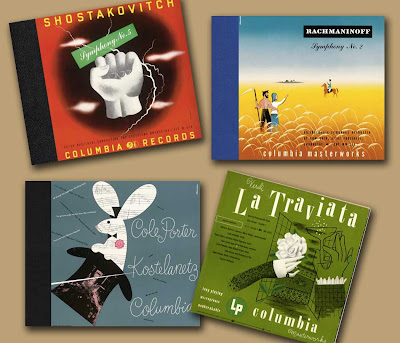Magazine design from 1930 to 1950 was considered the golden era and Harper’s Bazaar had its king in Alexey Brodovitch. As art director at Harper’s Bazaar, Brodovitch was the straw that stirred the consumer passion for fashion periodicals. A European immigrant, Brodovitch brought his theories on design that were nurtured by his contemporaries overseas––right into the American living room.
Harper’s Bazaar, was as stunning visually as it was in its long running financial success. Two magazines stood out of the crowd of numerous fashion periodicals during the Thirties, Vogue (art directed by M. F. Agha), and Harper's Bazaar (art directed by Alexey Brodovitch from 1934 to 1958). Both were on the cutting edge of design, and leaders of the pack in advertising sales.
At Harper's, Brodovitch introduced a simplified “modern” graphic style that would appeal to the American masses for over three decades, and at the same time, advance an appreciation in modern design through his distinctive approach. Americans learned about modern design through commercial culture, and the social obsession of the age was clothing and fashion. His layouts used aggressive shapes and text blocks that mimicked the photographs. Imaginative cropping and fanning of his photos and text suggested a style that is not about an individual model-but about shape and form.
By 1950, “white space” was the hallmark of the Brodovitch style. It was also a style that now defined fashion as an abstraction, as he implied that the bodies are to secondary to the overall product and design of a page.
Brodovitch had a plethora of passion for education and played a very active role in the commissioning process, often discovering and showcasing young, unknown talent along the way. His followers were many, and he taught design classes at his home and at the New York’s New School for Social Research. Brodovitch became a masterful influence as he asked the student to search within each problem for the best solution and execution. He was deeply influential not only to his student body, but also on their eventual approach to design.
One of his students, Otto Storch-who would also go on to become a prominent designer-wrote about his classes: “Brodovitch would dump photostats, type proof, color pieces of paper, and someone’s shoelace, if it became untied, onto a long the table together with rubber cement. He would fold his arms and with a sad expression challenge us to do something brilliant.”
Looking at his covers for Harper’s Bazaar one can obviously see a time capsule of the day and an American cultural obsession with fashion. Subject matter aside, they are compositional masterpieces of color, light, and form in a day when covers did not have to be plastered with massive amounts of copy to a lure the consumer to buy off the newsstand.
Brodovitch was a design wizard that could push the product forward to the consumer with a visual beauty that was so far ahead of the commonplace magazine design of his day. As a art director of art and fashion jewelry magazines for over 15 years, I have a special admiration for his masterful solutions, and have used his techniques to move the viewer’s eye away from the model and onto focusing on these art forms.
The Brodovitch style in our era of diminishing page counts, and with that––diminishing white space—is not always a path of designer can implement. But for those who love magazines––it’s a style one hopes will never fade.
Brodovitch was a design wizard that could push the product forward to the consumer with a visual beauty that was so far ahead of the commonplace magazine design of his day. As a art director of art and fashion jewelry magazines for over 15 years, I have a special admiration for his masterful solutions, and have used his techniques to move the viewer’s eye away from the model and onto focusing on these art forms.
The Brodovitch style in our era of diminishing page counts, and with that––diminishing white space—is not always a path of designer can implement. But for those who love magazines––it’s a style one hopes will never fade.
Check out my techniques inspired by Brodovitch to make jewelry the key focus of a layout by clicking on the Fashion Book head on my home page - www.flyingblindpuppy.com







